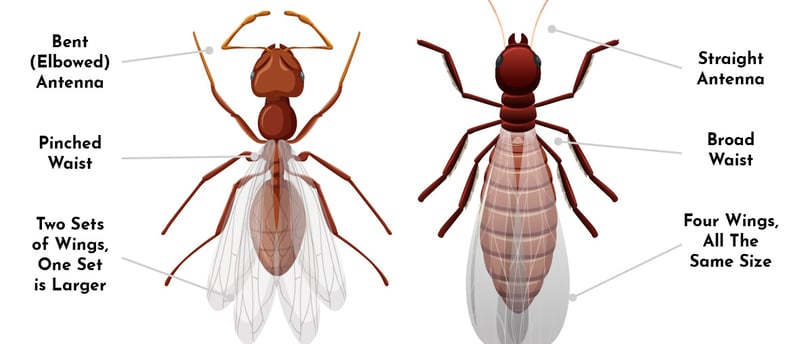Don't overpay for exterminating, give us a call! (423) 559-9400 or reach out at clevelandpestcontroltn@gmail.com
Carpenter Ants vs. Termites
How to correctly identify each and their behavior
5/14/20241 min read


Ants(which are shown to the left in the image below) are very social with one another. There are over 8,000 unique species. They are mostly found in or around the house almost anywhere, in mounts outside in the field with 'follow the leader' type trails, or in a tree. Sometimes when killing ants, it can remain a problem because the mounts remain unaffected. An ant mount (or also known as a nest containing millions of ants) contains things like:
(1) Worker ants who are sterile or nonreproductive female ants, younger ants help take care of the brood and the queen. Older ants help build the nest or collect resources to which is brought back to feed others called trophallaxis.
(2) Soldier ants, which are bigger and stronger, have mandibles (used for fighting and cutting) which help them protect their base and sometimes use their head to block entry points to help invaders from getting in.
(2) A queen(s) who is the leader of the colony lays thousands of eggs who located deep inside the ant colony. Queens are made from newly mated winged reproductive who lose their wings to start their colony alone and start laying eggs. Without her, the ant colony could only survive a few weeks/months
(3) Brood which consist of eggs, larvae, and pupae which the queen feeds and takes care of them while they develop from each stage until they are fully developed into an adult which takes 3-6 years.
(4) Winged ants that leave nesting sights to mate and start new colonies elsewhere which normally occurs on a warm day in the warmer months. These ants make what's described in number two
As these ants age, their roles might change over time. Frequently, ants move nesting sights as quickly as overnight if they lack food, water, or if the weather is too dry/wet. Ants also make temporary pheromone trails to help others find food and water or to recruit others to help collect a big resource.
